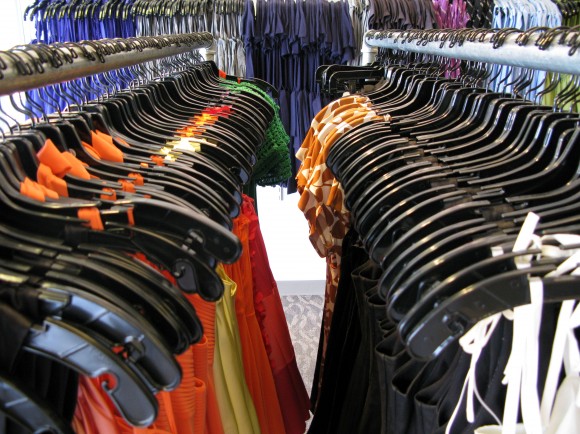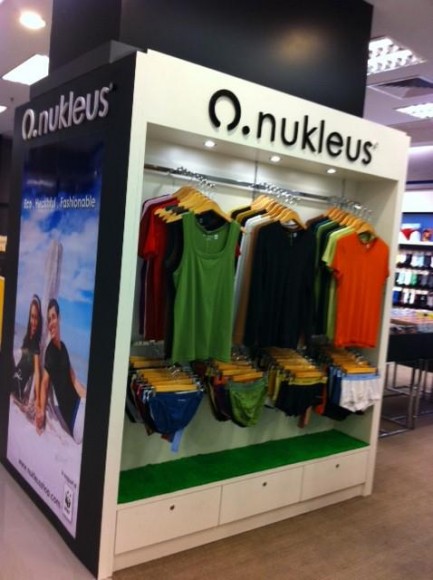
HAVE you ever wondered what your clothes are made of? How materials such as cotton or polyester are produced, and by whom? And do fashion companies pay our farmers and factory workers fairly for their labour?
I was oblivious to the environmental and social woes associated with conventional cotton farming until I read the book The Story of Stuff recently. The use of child labour and pesticides at cotton farms, the toxic processes involved in bleaching and dying the garments, and the use of sweatshop labour are just among some of the issues highlighted.
Later, I also learnt that processes to produce petroleum-based fabrics like nylon and polyester are energy-intensive and release greenhouse gas. It was perhaps naïve of me to have assumed that companies would uphold human rights standards and take care of the environment while attempting to maximise profits.
Troubled, I started searching online for better alternatives and stumbled upon the Ethical Fashion Forum – made up of businesses that aim to design, source and manufacture clothing in environmentally friendly ways, and which benefit local communities.
While many eco fashion labels have yet to make it to Malaysian shores, I found several online guides to sustainable fashion practices for consumers. I adapted them and formed four strategies to green my wardrobe before making new purchases for the year.
1. Cherish your current garments

As Warren McLaren wrote in TreeHugger: “The greenest garments are those you already own. No more resources are required to get them to you. No more materials extraction, manufacturing, shipping, retailing, [etc.].”
Wear, wash and dry your clothing with care so that they last longer. When they become worn out, consider using them as rags instead of filing up landfills.
2. Reorganise your wardrobe
Running out of outfit ideas and tempted to buy new attire? Reorganise your wardrobe first so that you would have a clearer idea what you already own. Most of us own more clothing than we really need and have at least a few outfits that we rarely, or never, wear. Find new ways to mix and match your garments.
If you’re up for a creative challenge, select six garments – excluding underwear, shoes and accessories – and wear only these six for an entire month. Called Six Items Or Less, this global experiment started in 2010 aims to get the public to rethink what they are wearing and consuming. Document and share your experience. You’re likely to end up with several fresh ideas to mix and match your clothes and accessories after this special month.
3. Shop vintage and local
If you do have to buy, consider going vintage. From casual wear to evening dress, you’ll find many pre-loved items in good condition at affordable prices at local bazaars or online boutiques.
Buy classic styles and colours that will not age.
If you’re looking for accessories, consider buying reasonably priced handmade items from indigenous people and local entrepreneurs instead of heading straight to departmental stores. The proceeds would support their livelihoods, preserve their crafts and cultures (for the Orang Asli/Asal), and encourage the growth of creative entrepreneurs.
4. Go organic and vegan

I’ve put this last as organic fashion brands are still relatively hard to find in Malaysia. The only two brands I’m aware of are Nukleus, which sells eco-friendly underwear, and Mell Basics, which offers organic t-shirts and dresses for women.
The truth is, organic wear tends to be pricier. Organic cotton is still costlier to grow, harvest and manufacture as the industry has yet to reach economies of scale. Nevertheless, if you can afford it, go organic.
From food, electronics and cosmetics to clothing, the new consumption habits inspired by The Story of Stuff video and book are slowly changing the way I live.
True, I’m often upset to find out that the processes involved in making these products may have hurt local communities and the environment. Some may prefer to remain ignorant to spare themselves the guilt trip. But these human rights and environmental issues will not go away just because we refuse to acknowledge and address them.
Only when more and more consumers are aware can we encourage farmers, companies and governments to clean up the industry. Then we can wear our garments comfortably with a clear conscience that they were produced in eco-friendly ways. ![]()
Gan Pei Ling recommends Eco Chic: The Savvy Shopper’s Guide to Ethical Fashion by The Ecologist editor Matilda Lee to readers interested to learn more about sustainable fashion. She believes it is possible to live sustainably and be fashionable at the same time.


Miriam Loh says
Marks & Spencer does carry t-shirts made of fair-trade organic cotton at quite reasonable prices. I wonder how the economic relationship works. Keep up with these great articles! We’re with you on being conscious about the way we live.